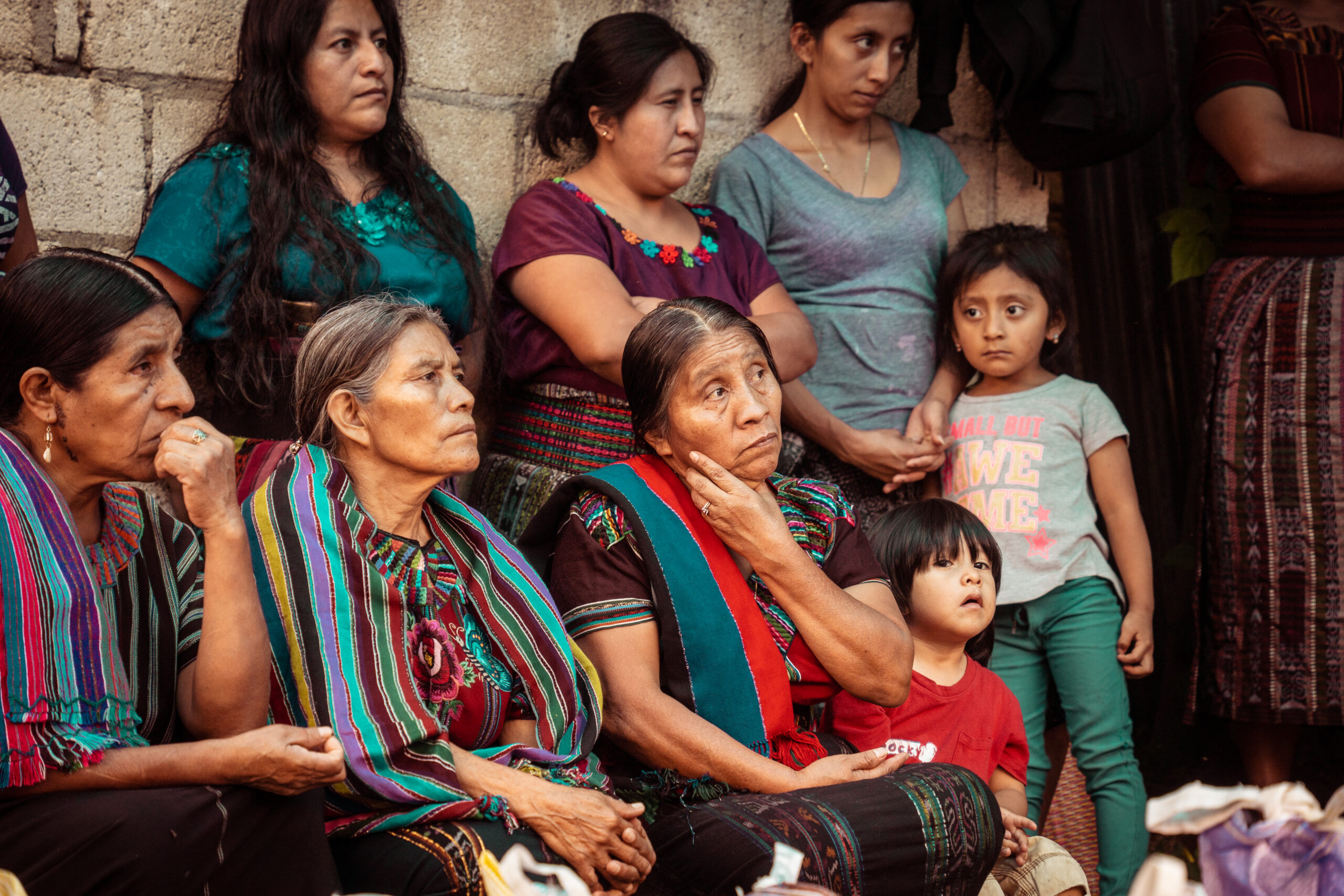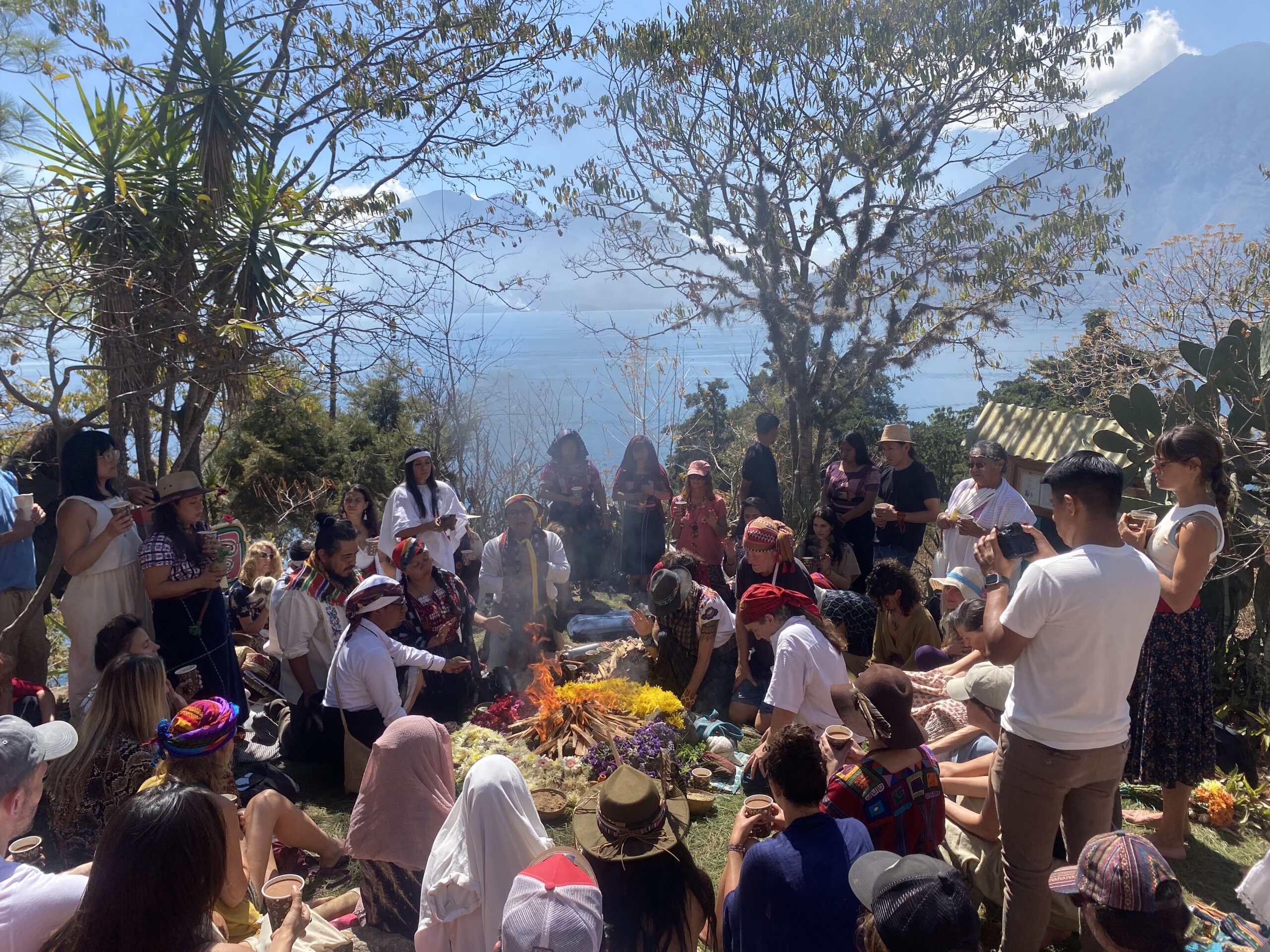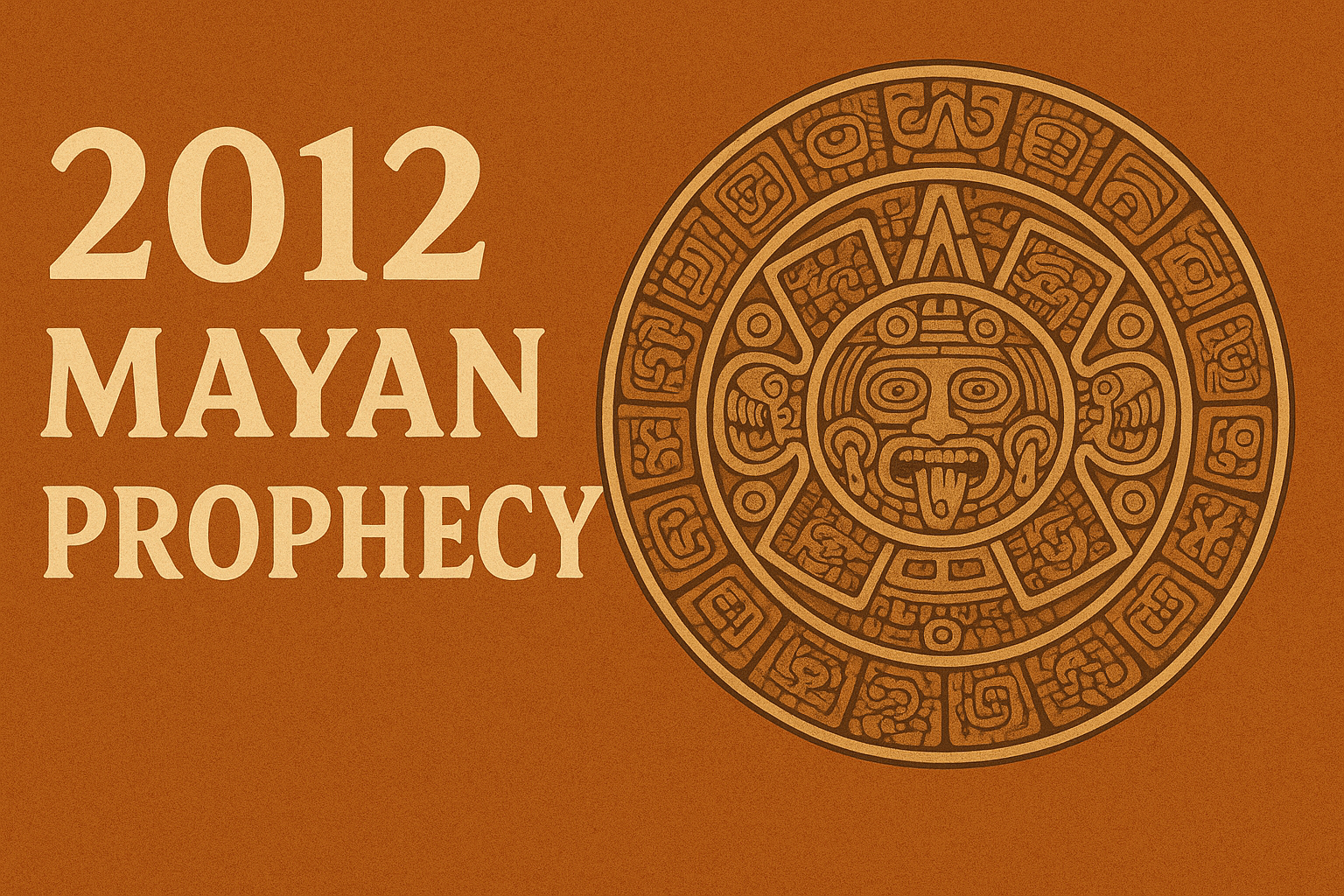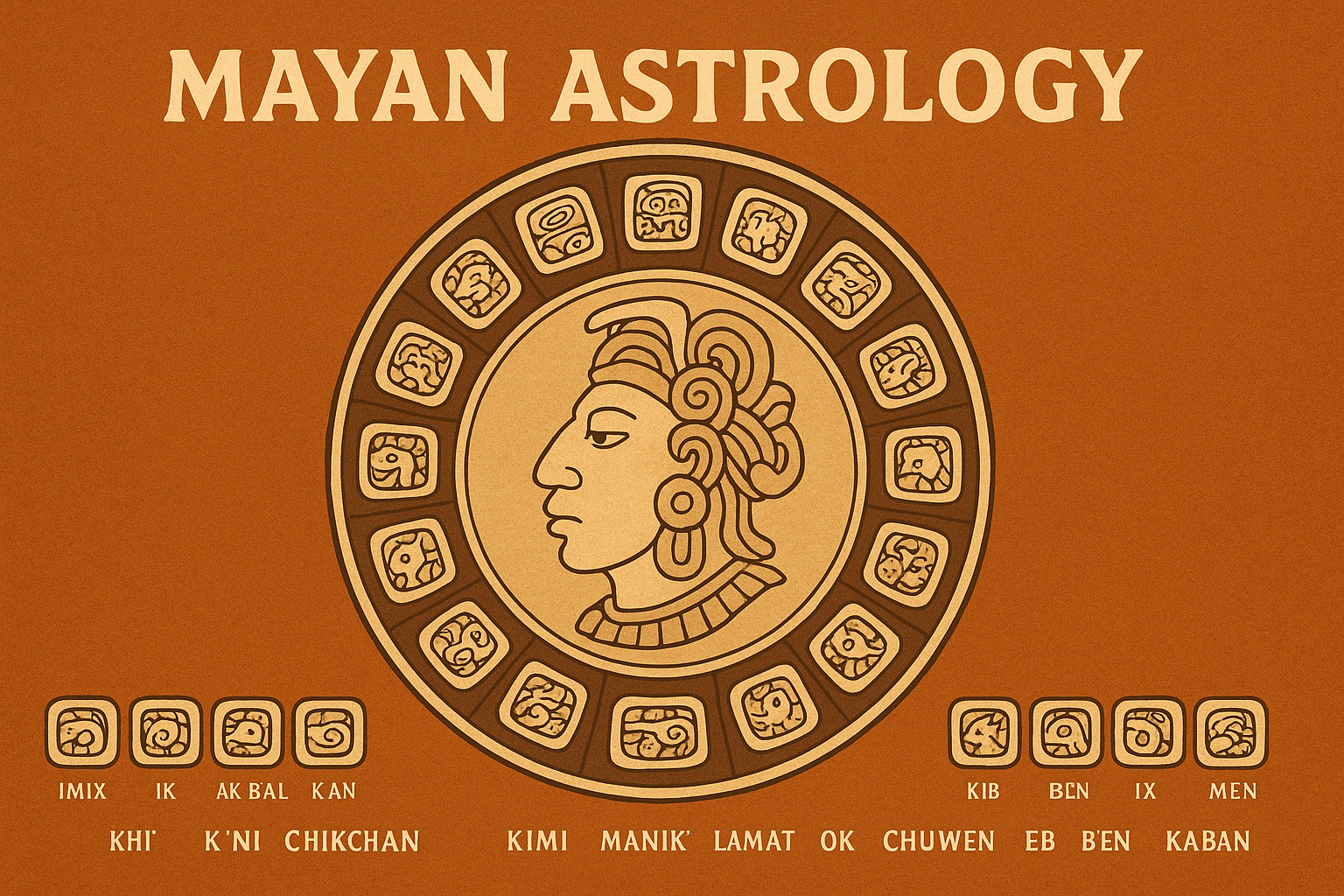The Mayan Calendar: Ancient Wisdom You Can Still Feel at Lake Atitlán
Have you ever wondered if time itself could be alive? Here on the shores of Lake Atitlán, the ancient Mayan calendar still beats like a heart — guiding ceremonies, planting seasons, and even the destinies of those born under its sacred day signs.
You’ve probably heard the wild rumors — from the mysterious 2012 “end of the world” prophecy to the secret meaning of the Days Out of Time. But what if the truth is stranger, deeper, and far more beautiful than the myths?
From the 260-day sacred cycle of the Tzolk’in to the solar Haab’, the vast Long Count, and the cosmic timing of Venus, the Mayan calendar is not just a way to mark dates — it’s a map of how energy moves through the universe. And here in the highlands of Guatemala, it’s still alive in ways that will make you question everything you think you know about time.

What is the Mayan Calendar?
The Mayan calendar is actually a system of multiple calendars working together. Unlike the modern Gregorian calendar, the Maya tracked time through cycles rather than a straight line. Each cycle had its own purpose — sacred ceremonies, seasonal agriculture, cosmic alignment, historical record-keeping.
The most famous Mayan calendars include:
-
Tzolk’in (Sacred Calendar) — 260 days, guiding rituals and spiritual life.
-
Haab’ (Solar Calendar) — 365 days, tracking the agricultural year.
-
Calendar Round — a 52-year cycle combining Tzolk’in and Haab’.
-
Long Count Calendar — the Maya’s historical record, spanning thousands of years.
-
Lunar Cycles — tracking moon phases for ritual timing.
-
Venus Cycle — observing Venus’s movements for war, prophecy, and agriculture.
Let’s unpack each one, with both the history… and the magic.
The Tzolk’in: The Sacred 260-Day Mayan Calendar
The Tzolk’in is the spiritual heartbeat of the Mayan world. It’s 260 days long, made up of 20 day names and 13 numbers that rotate in a repeating cycle.
-
20 day signs (like Imix, Ik’, Ak’bal…) each carry unique energies, much like astrological signs.
-
13 numbers cycle alongside them, adding layers of meaning.
A date in the Tzolk’in might be something like 7 Ajpu — a number (tone) + a day sign.
Why 260 days?
Historians believe it could be linked to:
-
The human gestation period (approx. 260 days)
-
Agricultural cycles in Mesoamerica
-
The movement of the sun and zenith passage at certain latitudes
For the Maya, the Tzolk’in was not about marking birthdays in the Western sense. It told you the energy you were born under, guiding your role in life. Even today, Ajq’ij (Mayan daykeepers) use it for divination and personal guidance.
The Haab’: The 365-Day Solar Mayan Calendar
The Haab’ is closer to what we think of as a year — 365 days, divided into 18 months of 20 days each, plus a 5-day period called Wayeb’.
The 18 months:
Each month had its own name and symbol, often tied to agriculture or the natural world. For example:
-
Pop — the mat, symbol of governance
-
Wo’ — symbolizing night and the black sky
-
Sak’ — meaning “white” or purity
The Wayeb’ — Days Out of Time
The last 5 days of the Haab’ calendar, known as the Wayeb’, are a powerful pause between cycles — a moment outside ordinary time. Far from being only days of caution, they are also a big celebration in which all 20 Mayan day signs are honored. Communities gather to make offerings, share stories, and reflect on the year gone by while inviting blessings for the one ahead. Even today, some villages mark the Wayeb’ with ceremonies, music, and quiet reflection, blending joy and gratitude in this sacred transition.
Here, at Lake Atitlán, we celebrate with fire ceremonies, offerings to the directions and the gods and a special cacao drink. Come visit us one day!

The Calendar Round: 52 Years of Harmony
When you combine the 260-day Tzolk’in and the 365-day Haab’, you get the Calendar Round — a cycle that repeats every 18,980 days (about 52 years).
For the Maya, 52 years was a significant “lifetime” cycle. Major events, ceremonies, and political changes often happened at Calendar Round completions.
The Long Count Calendar: Measuring Millennia
The Long Count is the big one — a system for recording exact historical dates over thousands of years.
Instead of years, the Long Count counts days from a fixed starting point (August 11, 3114 BCE in our Gregorian calendar). Dates are recorded in five units:
-
Baktun = 144,000 days
-
Katun = 7,200 days
-
Tun = 360 days
-
Winal = 20 days
-
K’in = 1 day
You might remember the “Mayan apocalypse” of 2012 — that was just the end of the 13th Baktun, a cycle reset, not the end of the world. For the Maya, it was a time of renewal.
Why People Thought the World Would End in 2012 According to the Mayan Calendar
Back in the early 2000s, a wave of pop culture headlines warned that the Mayan calendar predicted the end of the world on December 21, 2012. This came from a misunderstanding of the Long Count calendar, the Maya’s way of tracking vast stretches of time.
The Long Count works in cycles called Baktuns, each lasting 144,000 days (about 394 years). The date 21 December 2012 marked the end of the 13th Baktun — a significant completion, similar to finishing a millennium in the Gregorian calendar.
Some modern interpretations saw “the end of the 13th Baktun” as the end of the calendar itself, assuming that if the cycle stopped, so would the world. But to the Maya, the completion of a Baktun wasn’t doom — it was renewal. Just like flipping to a new page on a calendar, the count simply reset to 0.0.0.0.0, beginning the next era.
For many Maya communities, 2012 was a time of ceremony, gratitude, and hope for a new chapter. The “apocalypse” was never part of the original belief — that was a modern myth, fueled by Hollywood and internet speculation.
How Mayan Daykeepers Prepared for 2012
In the months leading up to December 21, 2012, the villages around Lake Atitlán were alive with ceremony and anticipation — but not fear. Local Ajq’ijab’ (daykeepers) saw it as a rare and sacred moment: the turning of a great cosmic page.
Ceremonies were held at lakeside altars and in the mountains, with offerings of flowers, candles, cacao, and copal incense. The focus was on gratitude for the closing cycle and prayers for harmony in the one to come. Elders spoke of cleansing the spirit, reconnecting with community, and planting intentions for the next 5,125-year era.
Here at Lake Atitlán, the energy was celebratory — a blend of reverence and joy. Some locals describe it as a spiritual sunrise, not an ending at all. And for those who stood by the fire at midnight, watching the flames dance into the new era, the memory is still alive, a reminder that endings are simply transformations in disguise.
Lunar & Venus Cycles
The Maya were astronomical masters. They tracked the moon’s phases for planting, fishing, and ceremonies. They also followed Venus’s 584-day cycle with incredible precision — sometimes aligning warfare with Venus’s heliacal rise.
Experiencing the Mayan Calendar at Lake Atitlán
Meet a Daykeeper
In villages like Santiago Atitlán or San Marcos La Laguna, you can meet an Ajq’ij who still reads the Tzolk’in. They may share your day sign, its meaning, and even perform a fire ceremony to align you with its energy.
Visit Sacred Sites
-
Iximché — just a few hours from the lake, with active ceremonies and glyph carvings.
-
Mixco Viejo — remote, atmospheric ruins with panoramic views.
-
Local altars in Atitlán villages — often hidden in forest clearings or near the lakeshore.
Join a Ceremony at Eagle’s Nest
Our community often hosts Cacao Ceremonies and Mayan fire ceremonies led by local elders. These are authentic, heart-opening ways to feel the calendar in action. Explore our event schedule to join one!
How the Mayan Calendar Differs from the Gregorian Calendar
-
Cyclical vs. Linear — The Mayan system repeats and layers cycles, while the Gregorian is straight-line.
-
Multiple Interlocking Systems — The Maya tracked spiritual and practical time simultaneously.
-
Deeper Connection to Nature — Every day has an energy, an animal, a purpose.
Why the Mayan Calendar Still Matters Today
In a world of digital schedules and constant rush, the Mayan calendar reminds us that time is not just numbers on a screen. It’s alive, connected to the cycles of the earth, the cosmos, and our own inner rhythms.
Travelers who spend time at Lake Atitlán often feel this shift — the days feel fuller, slower, richer. It’s as if the lake itself keeps time in the old way.
FAQs About the Mayan Calendar — Quick Answers for the Curious
What is the Mayan calendar based on?
The Mayan calendar is based on astronomical observations of the sun, moon, planets (especially Venus), and agricultural cycles, combined with sacred numerology.
How many calendars did the Maya have?
At least three main ones: the Tzolk’in, the Haab’, and the Long Count — plus lunar and Venus cycles.
What is today’s date in the Mayan calendar?
It depends on the Tzolk’in and Haab’ cycles; a local daykeeper can tell you exactly.
Was the Mayan calendar more accurate than ours?
In tracking the solar year, it was remarkably precise — closer than the Julian calendar and nearly matching the Gregorian we use now.
What happened in 2012 in the Mayan calendar?
The 13th Baktun ended, marking the completion of a major cycle and the start of a new one — not an apocalypse.
Final Thoughts from the Shores of Atitlán
Here at Eagle’s Nest Atitlán, we see the Mayan calendar not as an artifact of the past, but as a living guide. It’s woven into the way the sun moves over the lake, the timing of ceremonies, even the way people greet each other.
If you’re planning a trip to Guatemala, take a moment to experience it for yourself. Sit with a daykeeper. Attend a fire ceremony. Let the rhythms of the Tzolk’in and Haab’ work on you.
Because once you’ve felt it, you’ll never look at time the same way again.






[…] Learn everything you need to know about the Mayan calendar in this post. […]